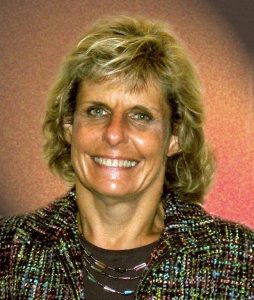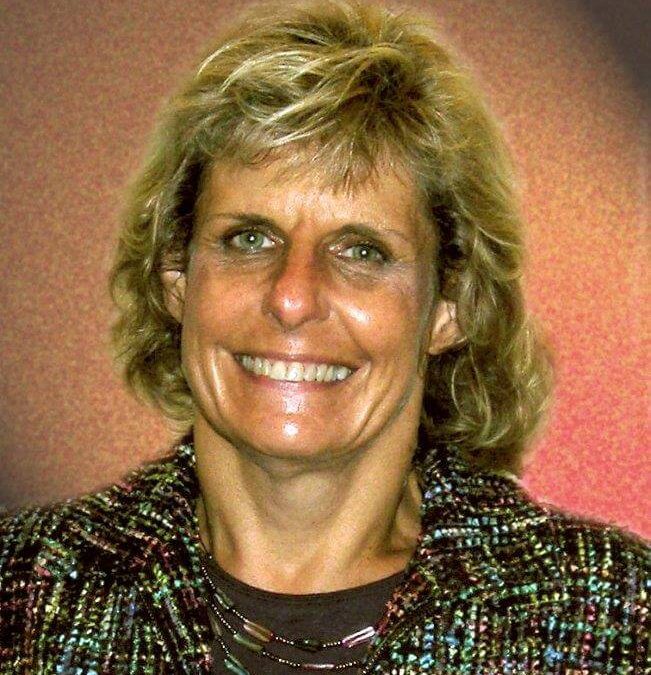 As part of our series on trailblazing women in the supply chain industry, I interviewed Barbara Jorgensen, co-founder and managing editor, Electronics Purchasing Strategies (EPS). Jorgensen has more than 20 years’ experience as a journalist, working for leading electronics industry publications such as Electronic Business, Electronic Buyers’ News, and EDN.
As part of our series on trailblazing women in the supply chain industry, I interviewed Barbara Jorgensen, co-founder and managing editor, Electronics Purchasing Strategies (EPS). Jorgensen has more than 20 years’ experience as a journalist, working for leading electronics industry publications such as Electronic Business, Electronic Buyers’ News, and EDN.
As a freelance writer, Barb wrote and managed an award-winning custom publication for Sager Electronics; was a leading contributor to Avnet Global Perspectives magazine; was a regular columnist for the National Electronics Distributors Association monthly newsletter; and wrote for industry associations such as IPC. Barb was also a featured blogger on the B2B Website Allbusiness.com and helped launch Electronics Sourcing North America, a start-up magazine serving purchasing professionals in the Americas.
Prior to her freelance career, Jorgensen was a senior editor at Electronic Business, the pre-eminent management magazine for the electronics industry, featuring world-class manufacturing companies such as Dell, Hewlett-Packard, Cisco and Flextronics International. Before joining EB for the second time, Barb spent six years with Electronic Buyers’ News as managing editor, distribution, winning several awards for coverage of the distribution beat. A graduate of the University of Binghamton, Barb began her journalism career with the Gannett newspaper chain. She has worked for a number of local newspapers in the Greater Boston area and trade journal publishers Reed Business Information and UBM.
How long have you worked in the supply chain industry?
I’d measure my specific supply chain experience with the publication of my first feature on electronics distribution in 1989. After copy editing for a leading electronics industry magazine for a couple of years the editors suggested I use my journalism experience to do some writing. I profiled Marshall Industries, a top-tier distributor at that time, and its founder, Gordon Marshall, who passed away last year.
How did you choose (or end up) working within the industry?
In high school and college, I specialized in journalism and had been writing features and covering town government for a Boston-area daily newspaper. The schedule was grueling, so I applied for work at a trade magazine publisher. This eventually led to being assigned the electronics distribution beat. I made it my goal to understand the business inside and out, and that expertise helped establish my credentials in the industry.
Two of the leading distributors now generate revenue in excess of $20 billion per year; I was calling on them before they reached their first $1 billion.
Although I never expected to become an expert in the electronics supply chain, the growth of the industry and my expertise has enabled a solid career path.
Let’s talk about EPS. How did EPS come about?
Electronics Purchasing Strategies – soon to be called EPSNews – was driven by several external events taking place in trade publishing. A few years prior to EPS, which started publishing online in 2013, the last purchasing publication in the industry closed its doors. Trade publishers were also laying off editors as they moved more content online. My two colleagues and I – Gina Roos and Bolaji Ojo – found ourselves unemployed all at the same time.
Given the under-representation of purchasing in the trade media, we decided to come together and start an online publication. Our reputation in the electronics industry helped us secure our first advertisers. We have been fortunate enough to support the publication primarily through advertising and newsletters since.
Where is EPS today?
While we were assessing our business model after three years we discovered we weren’t keeping pace with some of the dynamics of online publishing. Although our content has always been well received we weren’t getting as much ‘bang for the buck’ as we should have vis-a-vis SEO because of the way we developed our site. Although our content won’t change—we are focused on deep analysis of the entire supply chain from design through recycling – emphasizing the news aspect of our coverage will attract a wider audience and result in better organic growth.
Revenue-wise we have grown every year since our inception; 2015 was our best year so far, growing in the mid-double-digits.
What goals do you have for the company?
We’d like to expand. Our audience has largely been based in the U.S. because that is the market we know best, but clearly electronics procurement in the Far East continues to expand. The electronics markets in Europe remains steady and, let’s face it, the supply chain is global. So EPSNews would like to devote resources toward building an audience in the EU, the Far East, and relevant geographies in between.
Have you seen a change in the number of women entering the industry and/or contributing to the industry?
Absolutely. When I began my writing career in the tech industry there were fewer women in trade publishing – most of the women I networked with then were in marketing and PR. But that changed pretty rapidly at least on the media side during the 1990s. I’d say by then there was a 50-50 split between women and men in key editorial positions. In the electronics industry, however, there were few women executives. The first woman CEO of a major distribution company was Harriet Green, named CEO of Premier Farnell in 2006. Prior to that there were a handful of women in C-level positions – I know if I mention names I will forget someone – which was extremely encouraging. These days I see more women at industry forums such as EDS and at the ECIA conference than ever before, and they are in management positions.
Have you seen a change in the positions women hold within the supply chain industry?
Again, absolutely. Women are holding higher positions in management within my ‘world’—electronics distribution – but even more so within the online/social media companies such as Yahoo that have become so important to all of us. I also recently attended a presentation by a woman who headed the high-tech entrepreneurial business within Foxconn – a Chinese EMS company – who has since moved to Flex.
Any advice for women considering entering the industry?
My advice would be the same for anyone—learn as much as you can upfront. In business journalism, I had to interview CEOs and MBAs and at the beginning that was intimidating. I finally overcame that fear by reading everything I could about the company, the industry and the executive in advance, and I also asked ‘dumb’ questions of people I trusted. I also found that admitting what I didn’t know never hurt me: even the highest executives in the industry were willing to take the time to explain many of the things that make this industry unique. I think in general people are always willing to give someone a ‘hand up.’ I also found that companies like to work with writers that took the time to learn about their business. Knowledge and professionalism are guidelines I’d recommend for anyone.
On a broader level, what trends do you see within the industry?
I think right now there is a lot of turmoil regarding the supply chain as we know it and the implications of conducting business digitally. This applies to how companies work internally and how they are going to market. The supply chain has done a pretty good job at adopting technology to improve internal operations – we haven’t had an inventory glut since 2001. Externally it’s another matter. E-commerce unintentionally set off huge problems in counterfeiting. We are still trying to figure out where social media fits: it looks like ‘free’ advertising – you can generate a lot of attention with a tweet – but you don’t always control your message. Look at the mistakes people make that go viral.
Then there is managing the supply chain online. Business practices within the electronics supply chain haven’t kept up with technology. For example, supplier franchises are still granted on a regional basis – less so than before – but online business doesn’t have any boundaries. I think we are going to see common supply chain practices change as technology accelerates. Geographic boundaries are already crumbling, and there are practices such as ship-from-stock-and-debit; inconsistent global pricing; and demand-creation compensation that are simply inefficient. There’s little room for inefficiency in the digital supply chain.
You may also be interested in:
- Trailblazing Women in the Supply Chain
- Arrow Electronics’ Cathy Morris talks women in the supply chain
- Top Female Supply Chain Executive, Mickey North Rizza Talks Women in the Supply Chain
- Diversity and Leadership: An Interview with Arrow Electronics’ Kendrea Durr-Smith
- The gender of your CEO and your bottom line

